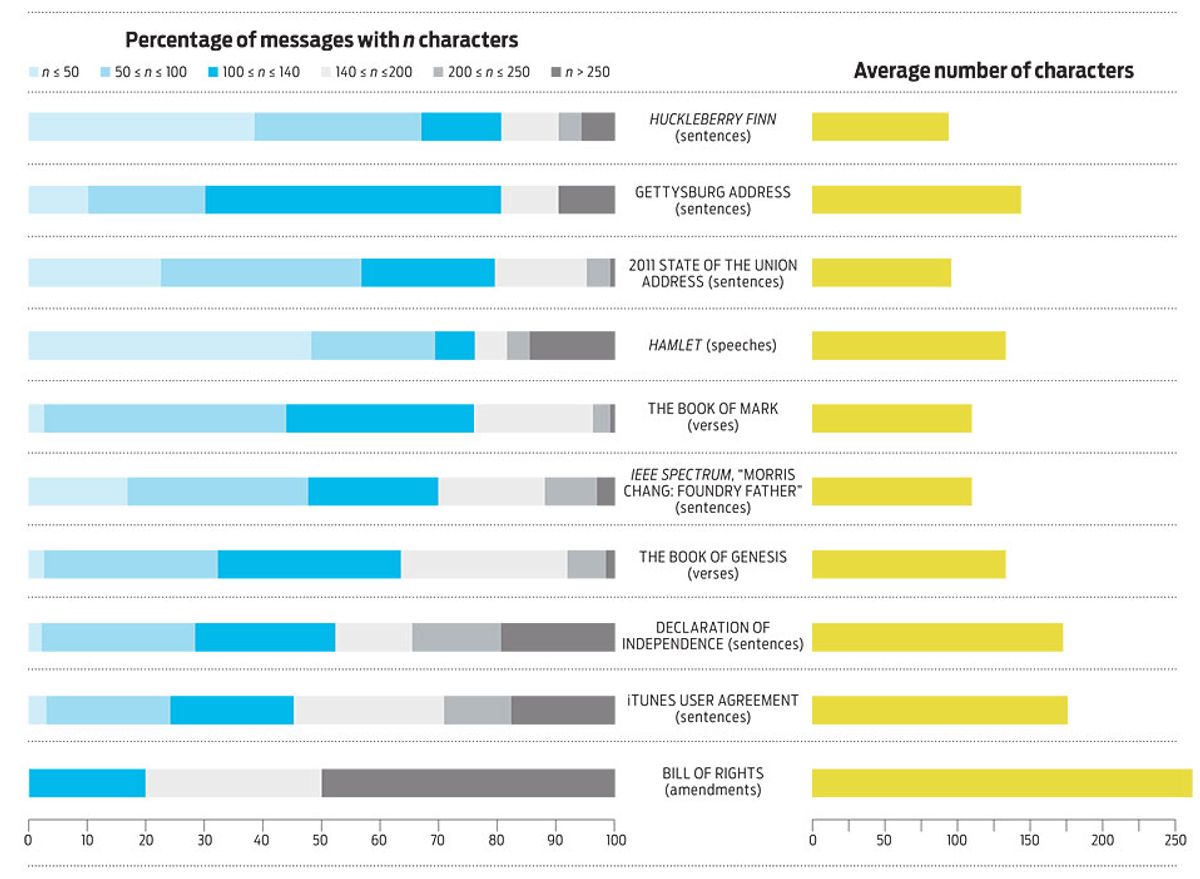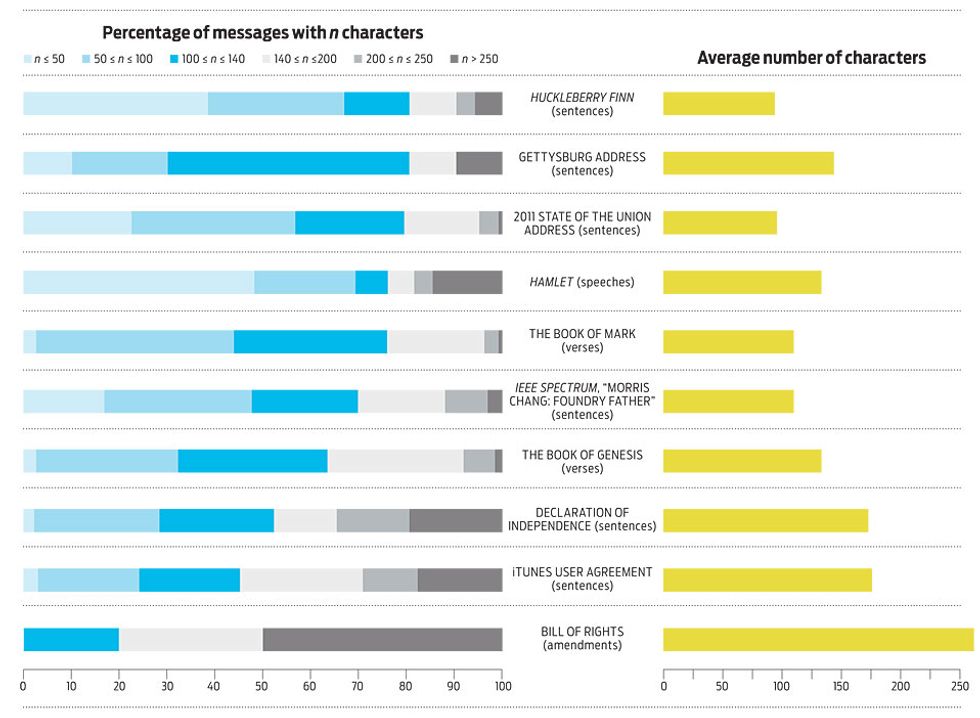Twitter notoriously limits tweets to 140 characters—the size of an SMS text, minus 20 characters for the tweeter's user name. So what can—and cannot—be said in 140 characters? For example, how does that stack up when it comes to speeches in a play, sentences in a novel, amendments to the U.S. Constitution, or verses in the Bible?
Our calculations show that the Bill of Rights averages 264.6 characters per amendment; only 2 of these first 10 amendments to the Constitution would fit into a tweet. Mark Twain's Huckleberry Finn did about as well as any work we looked at, with 94 characters per sentence. Nevertheless, roughly one-fifth of its sentences exceed the 140-character limit. (To be sure, quotes and sentence fragments can be counted in different ways, but the numbers shown here wouldn't change drastically.)
But constraints can be good—they may force a writer to be succinct. Perhaps we at IEEE Spectrum could learn something from Huck Finn's biographer: The sentences in our May cover story on Morris Chang averaged 114 characters, with more than a third of them exceeding 140.
"What's important about 140 characters is not the character length but how an accident of history triggered innovative cultural practices," says Danah Boyd, a senior researcher at Microsoft Research. As an example, Boyd cites the shorthand that telegraph users developed because they were charged by the letter. SMS and Twitter users have similarly evolved a shorthand, and there are least 10 different URL shortening services.
So, no, Shakespeare couldn't have tweeted Hamlet. But the more relevant question may be: How might the Bard have written differently under this constraint?
About the Author
Joel B. Predd, an associate engineer at the Rand Corp., in Pittsburgh, has a Ph.D. in information sciences and systems from Princeton. He has published papers in various IEEE journals, but this is his first effort for IEEE Spectrum. His wife, Prachi Patel, has been a Contributing Editor for several years.

